In the world of ice hockey, one of the most intriguing and often debated rules is the icing rule. It’s a rule that can change the course of a game, create moments of tension, and spark endless discussions among fans and experts alike.
But have you ever wondered why icing is sometimes waved off, allowing play to continue, instead of being called, leading to a faceoff in the offending team’s zone?
In this blog post, we will delve into the question ‘Why is icing waved off?’. From the early days of the sport to the introduction of hybrid icing, the evolution of this rule has been driven by a desire to enhance gameplay, promote player safety, and maintain the flow of the game.
So, let’s unravel the mysteries behind why icing is waved off and the scenarios in which this rule comes into play. Stay focused.
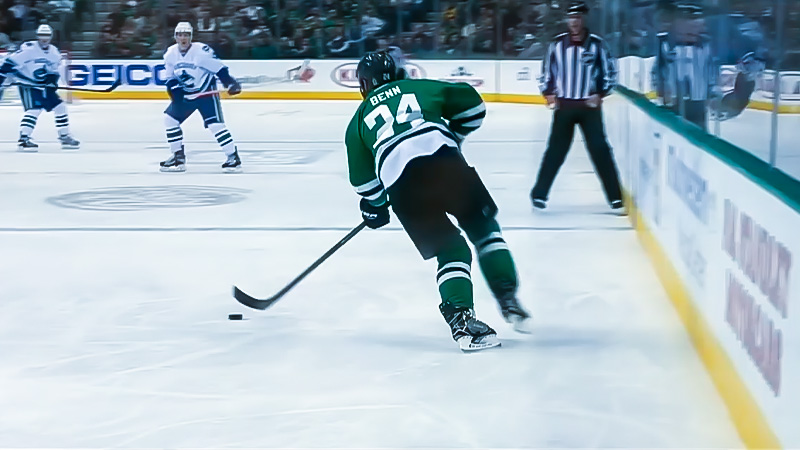
Icing Wave in Ice Hockey
In ice hockey, an “icing wave” refers to a strategic play used by a team to relieve pressure in their defensive zone and gain territorial advantage.
When a player from their own side of the center red line shoots the puck down the ice and it crosses the opponent’s goal line, icing is called.
However, some teams employ a tactic known as the “icing wave” to make this play more advantageous.
The idea behind the icing wave is to have a fast-skating player from the offensive team race down the ice after the puck, attempting to reach it before the defending team’s players.
If successful, this player can nullify the icing call, allowing their team to maintain possession of the puck in the offensive zone.
This tactic requires speed, timing, and teamwork and can be a valuable tool for maintaining offensive pressure while keeping the opposing team on its heels.
Historical Context of the Icing Rule
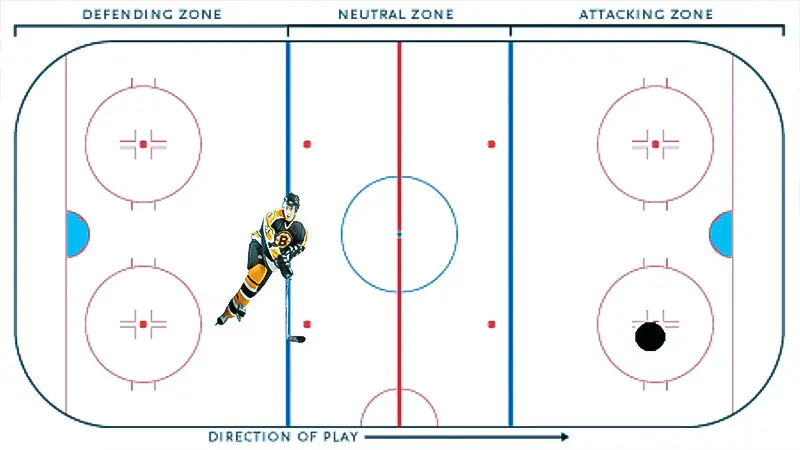
The icing rule in ice hockey has evolved over time to enhance the game’s fairness and safety. Its historical context can be traced back to the early development of the sport in the late 19th and early 20th centuries.
Early Icing Rules
In the early days of ice hockey, there were no icing rules. Players could simply shoot the puck down the ice to waste time or gain an advantage. This led to unexciting gameplay and sometimes dangerous collisions.
No Forward Passing
In the early 20th century, the forward passing rule was introduced, allowing players to pass the puck forward only within their defensive zone. This made it harder to move the puck down the ice easily.
Initial Icing Rules
As a response to the forward passing rule, icing rules began to emerge. Initially, they were quite different from modern rule. For example, some versions allowed players to shoot the puck the length of the ice as long as they were within their defensive zone.
Evolution of Icing Rules
Over time, the icing rule evolved to its current form. In the NHL, it typically involves a player from the defensive side of the center red line shooting the puck across the opponent’s goal line, leading to a stoppage of play if an opposing player touches it first.
Safety and Fairness
The primary motivations behind refining the icing rule were player safety and game fairness. Icing prevents teams from constantly dumping the puck down the ice to stall the game or avoid opponents. It encourages skillful puck possession and passing.
Hybrid Icing
In recent years, hybrid icing has been introduced in some leagues, like the NHL. This rule combines elements of touch icing and no-touch icing, allowing officials to determine who will reach the puck first, reducing the risk of dangerous collisions.
The historical context of the icing rule in ice hockey reflects the sport’s efforts to strike a balance between competitive gameplay, player safety, and fairness.
Why Is Icing Waved Off in Ice Hockey?
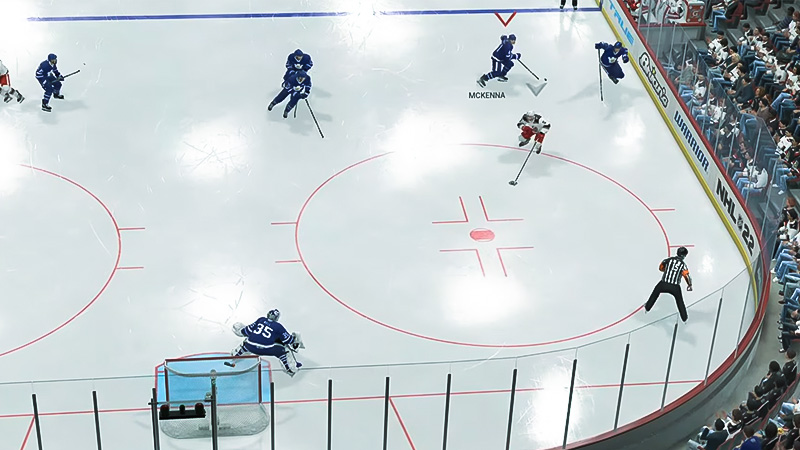
Icing is waved off in ice hockey when the officials determine that certain conditions have been met, allowing play to continue rather than stopping it for an icing infraction. Here are the main reasons why icing may be waved off:
Race to the Puck
If the linesman judges that a player from the team that committed the icing infraction has a reasonable chance of reaching the puck before an opponent, they may wave off the icing. This decision is typically made based on the players’ positioning and skating speed.
Goalie Plays the Puck
If the goaltender from the defending team comes out of the crease and plays the puck before it crosses the goal line, icing is waved off. Goalies often do this to initiate a quick breakout or prevent an icing call.
Opponent Touches the Puck
If an opposing player touches the puck before it crosses the goal line, icing is nullified, and play continues. This can happen if an opponent successfully reaches the puck first.
Hybrid Icing
In some leagues, such as the NHL, hybrid icing is used. With hybrid icing, the linesman determines which player would reach the puck first, taking into account their positions at the faceoff dots. If the attacking player is closer, icing is waved off; if the defending player is closer, icing is called.
The primary reason for waving off icing is to maintain the flow of the game and prevent unnecessary stoppages. It rewards players who are hustling to reach the puck and encourages skillful plays.
Situations Where Icing is Waved Off
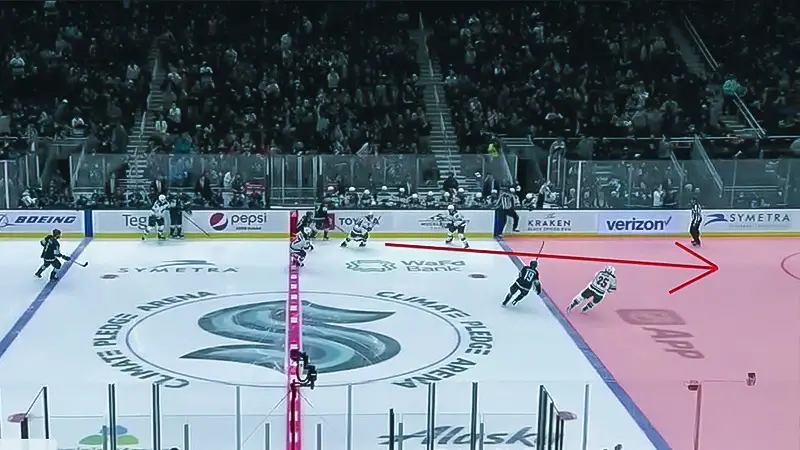
Icing can be waved off in ice hockey in various situations to allow play to continue rather than stopping the game for an icing infraction. Here are common situations where icing is waved off:
Race to the Puck
If an official determines that a player from the team that committed the icing infraction is likely to reach the puck first, they will wave off the icing. This decision is based on the players’ positions and skating speed.
Goalie Plays the Puck
When the goaltender from the defending team comes out of the crease to play the puck before it crosses the goal line, icing is waved off. This often occurs as a strategic move to start a quick breakout or prevent an icing call.
Opponent Touches the Puck
If an opposing player successfully touches the puck before it crosses the goal line, icing is nullified, and play continues. This can happen when an opponent reaches the puck first, negating the icing call.
Hybrid Icing
In leagues that implement hybrid icing, such as the NHL, the linesman determines which player would reach the puck first by considering their positions at the faceoff dots. If the attacking player is closer to the puck, icing is waved off; if the defending player is closer, icing is called.
Delayed Penalty
When the team that committed the icing infraction is about to be penalized, the linesman may wave off the icing to allow the penalized team to maintain possession of the puck until the penalty is assessed.
Team is Shorthanded
In some leagues and situations, if the team committing the icing is shorthanded due to a penalty, icing may be waved off to provide an advantage to the penalized team, encouraging more competitive play.
Waving off icing in these situations aims to keep the game flowing, promote fair competition, and reduce the risk of injuries that can occur during traditional icing situations.
Controversies and Challenges Regarding Icing Wave in Ice Hockey
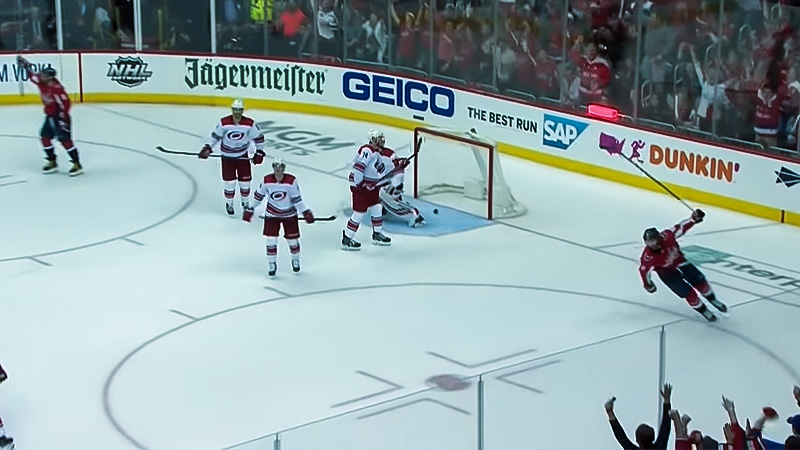
The use of the icing wave in ice hockey, specifically hybrid icing, has sparked controversies and faced certain challenges within the sport. Here are some of the notable controversies and challenges regarding the icing wave:
Subjectivity in Officiating
Determining whether an attacking player or a defending player will reach the puck first in hybrid icing situations is subjective. This subjectivity can lead to disputes and disagreements among players, coaches, and fans regarding the linesman’s decision, potentially impacting the fairness of the game.
Injury Risk
While the intent of hybrid icing is to reduce injuries that can occur during traditional icing plays, some argue that it doesn’t eliminate the risk entirely. Players may still engage in races to the puck, leading to collisions and potential injuries, even when icing is waved off.
Adaptation Challenges
The introduction of hybrid icing required players, coaches, and officials to adapt to a new rule, which can sometimes lead to confusion or errors during games, especially in the early stages of its implementation.
Game Pace
Critics argue that hybrid icing can slow down the pace of the game compared to traditional no-touch icing, as it involves a brief pause while officials make determinations about whether icing should be called or waved off.
Fan Understanding
Hybrid icing can be confusing for casual fans or newcomers to the sport who may not fully grasp the nuances of the rule. This can affect the overall fan experience and understanding of the game.
Consistency in Enforcement
Consistently applying the hybrid icing rule can be a challenge for officials, as it relies on their judgment in real-time situations. Inconsistencies in enforcement can lead to frustration among teams and fans.
Impact on Strategy
The introduction of hybrid icing has affected team strategies, as coaches and players need to adjust their tactics for situations where icing may or may not be waved off. This can impact how teams approach offensive and defensive plays.
Despite these controversies and challenges, hybrid icing was introduced to improve player safety while still allowing for competitive gameplay.
FAQs
Why is icing waved off in ice hockey?
Icing is waved off when an attacking player is likely to reach the puck before a defending player, promoting fair competition and continuous play. This prevents unnecessary stoppages and encourages players to hustle for the puck.
When does the goaltender’s action affect icing calls?
Icing is waved off if the goaltender from the defending team leaves the crease to play the puck before it crosses the goal line. This allows for strategic plays, such as quick breakouts, and keeps the game flowing.
Can an opponent nullify icing by touching the puck?
Yes, an opposing player can negate icing by successfully touching the puck before it crosses the goal line. This rewards hustle and skill while preventing stoppages.
What is hybrid icing in ice hockey?
Hybrid icing combines elements of touch and no-touch icing. The linesman determines who will reach the puck first based on their positions at the faceoff dots. If the attacking player is closer, icing is waved off; if the defending player is closer, icing is called.
Are there exceptions to icing calls in ice hockey?
Yes, there are exceptions. Icing may be waved off if a delayed penalty is imminent, providing an advantage to the penalized team. Additionally, when a team is shorthanded due to a penalty, icing may be waved off to encourage competitive play.
Wrapping Up
In the dynamic realm of ice hockey, understanding the nuances of icing and why it’s waved off is crucial for both seasoned fans and newcomers to the sport. This rule serves as a testament to the sport’s commitment to balance, safety, and continuous action on the ice.
Whether it’s a race to the puck, the goalie’s strategic move, or the touch of an opponent’s stick, icing waved off or not, adds layers of excitement and strategy to the game.
As the sport continues to evolve, so too will the icing rule, but its core objective of keeping the game thrilling will always remain at the forefront.
So, the next time you’re watching a hockey game, keep a keen eye out for those moments when icing is waved off, and you’ll gain a deeper appreciation for the sport’s rich tapestry of rules and strategies. Best of luck.




Benjamin Kenyon